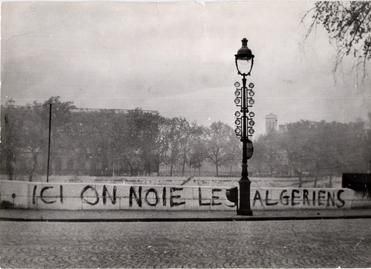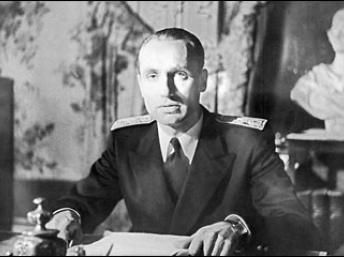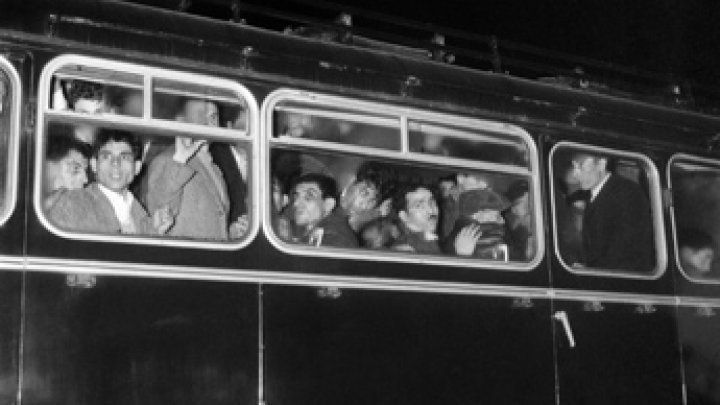The forgotten Paris Massacre
Every single news media outlet reported the last week's massacre in Paris as the "worst in France since WWII". The meme was universal.
Mainstream newspapers, such as Le Figaro in France, the Telegraph in Britain, the New York Times, the Washington Post and many US journals fed by the Associated Press; all of the major US TV-radio networks; media websites such as Time.com, thedailybeast.com, theatlantic.com and vice.com/fr; and even the progressive reporting of Democracy Now! all claimed that Friday’s events were the worst violence or terrorist attack in a single day in France since World War II.
However, this universal declaration is probably incorrect.
I say "probably" because of the unique circumstances of the perpetrators of the forgotten massacre in question. While the news media probably didn't intentionally engage in a historical lie, this error "further encourages racist amnesia in the broader society that this claim represents" and will contribute to the racial backlash already building in Europe.

Translated: Here we drown Algerians, Saint-Michel Bridge, 1961
The Paris Massacre of 1961
By 1961 the Algerian War of Independence was seven long years old. The war was marked with torture, massacres, epic human rights violations, and terrorism by both sides. Over 140,000 Algerian revolutionaries, over 25,000 French, and between 30-150,000 harkis (Muslim Algerian loyalists) would die in this war.
The war had shaken French society so much that the Fourth Republic had collapsed in a coup attempt in 1958, to be replaced by the Fifth Republic.
Finally, in the summer of 1960 a student group began protesting against the war and the use of torture. Soon after, trade unions and socialist parties began opposing the war.
A national referendum January 8, 1961, showed overwhelming support for Algerian independence in both France and Algeria. The French generals in Algeria responded to the referendum by trying to launch another coup. This coup attempt discredited the army.
To give you an idea of the atmosphere of Paris in these day, consider how was Head of Paris' police force in the 1960s - Maurice Papon, a former Vichy fascist later convicted of crimes against humanity. He became chief police after a protests of officers that included the chant of "Sales Juifs! A la Seine! Mort aux fellaghas!" (Dirty Jews! Into the Seine (river)! Death to the (Algerian) rebels!).

In the weeks before the massacre, the Algerian National Liberation Front (FLN) had committed several acts of terror against Paris police. Papon was livid. Papon already had a secret anti-FLN death squads operating in France.
Part of his strategy was an 8.30pm to 5.30am curfew on Algerians in the greater Paris region. A separate ploy was the systematic raiding of Algerian communities in search of the perpetrators. Five Algerians, reported to have had nothing to do with the FLN, were executed.Papon even publicly warned that French police would respond with “10 blows to every Algerian blow”.
It was these measures that spurred Paris’s Algerian community into action. So when the FLN called families into the streets, in defiance of the curfew, about 30,000, many of whom were French citizens, answered the call.
That's 30,000 out of 150,000 Algerians in Paris at the time.
Technically the protest was illegal, but it was also a peaceful demonstration against a racist law.
It was met by 1,658 armed police and security personnel.
In 1998, police officer Raoul Letard gave a harrowing eyewitness account of the night’s events to France’s Institute for Studies on National Defence. He told of how, on 17 October, his unit crossed the Pont de Neuilly, into the suburbs of Colombes, where from about 11pm they engaged in a murderous two-hour search.
The men “hunted and shot at anything that moved”, only leaving when there was no one left to shoot.
“We were waging war, and our adversary had been named as the Algerians,” Letard recounted.
...
“The police waited for the Algerians to come up out of the métro stations, made them stand still with their hands above their heads, then hit them with truncheons,” de Beauvoir wrote.
“Corpses were found hanging in the Bois de Boulogne, and others, disfigured and mutilated, in the Seine. Ten-thousand Algerians had been herded into the Vél d’Hiv [stadium], like the Jews in Drancy once before.

11,000 persons were arrested, and transported to internment centers previously used by the Vichy, where some were tortured.
No one actually knows how many were killed by the Paris police that terrible night. It took decades for the French government to even admit that a massacre had ever taken place.
Of course no police officer was ever punished for it. As for Papon...
In the same year as the massacre, Papon, who would years later be tried for signing the orders that sent thousands of French Jews to their deaths in Auchwitz, earned France's highest accolade: he was personally awarded the Legion of Honour by then-president Charles de Gaulle.
Just four months later, Papon's police force would commit another massacre of communist protestors at Charonne Metro Station, when the police hurled heavy iron plates onto a crowd below.
On St Michel bridge that joins Notre Dame cathedral with Paris’s bustling Latin Quarter, there is a nondescript stone plaque that is easy to miss.
It reads simply, “In memory of the numerous Algerians killed during the bloody suppression of the peaceful demonstration on 17 October 1961.”
So what does all this have to do with November 13?
Omar Ismail Mostafai, one of the suicide killers in Paris, was of Algerian origin – and so, too, may be other named suspects. Said and Cherif Kouachi, the brothers who murdered the Charlie Hebdo journalists, were also of Algerian parentage. They came from the five million-plus Algerian community in France, for many of whom the Algerian war never ended, and who live today in the slums of Saint-Denis and other Algerian banlieues of Paris. Yet the origin of the 13 November killers – and the history of the nation from which their parents came – has been largely deleted from the narrative of Friday’s horrific events. A Syrian passport with a Greek stamp is more exciting, for obvious reasons.
A colonial war 50 years ago is no justification for mass murder, but it provides a context without which any explanation of why France is now a target makes little sense.


Comments
This history
really helps put a perspective on the events of Nov 13. While there may not be a direct correlation, it shows us that eventually our sins do come back to haunt us. I have no doubt that there will be blowback to the US for our ever escalating war of terror on the Middle East.
Do I hear the sound of guillotines being constructed?
“Those who make peaceful revolution impossible will make violent revolution inevitable." ~ President John F. Kennedy
No one actually knows how many were killed by the Paris police"
This is incredible. I remember the story vaguely. It didn't make the news, giving the total amount of fatalities the way the press is treating this massacre.
It's amazing that this was allowed to happen and then be covered up. An Algerian connection makes more sense than the one unconfirmed Syrian passport.
Thank you for the reminder.
To thine own self be true.